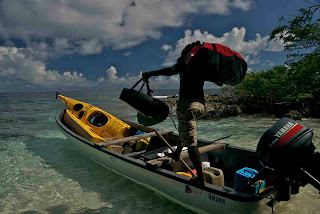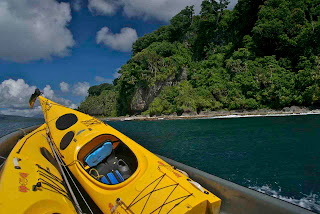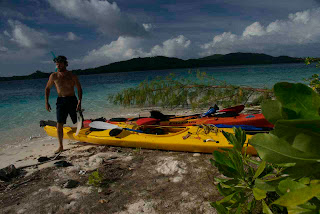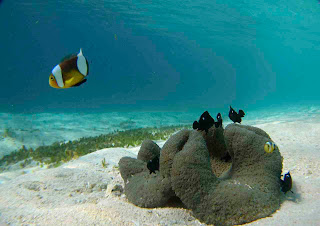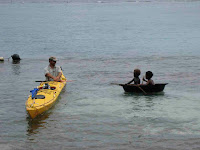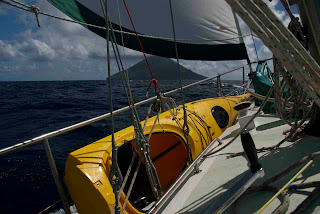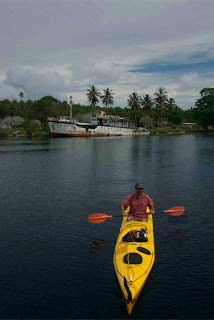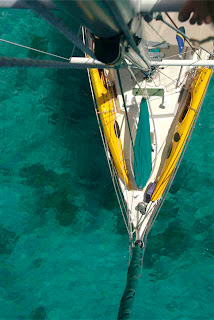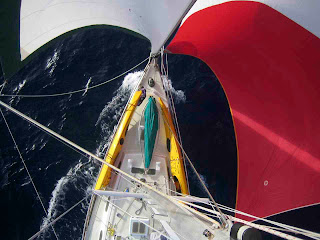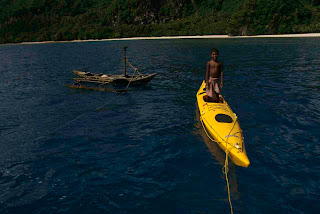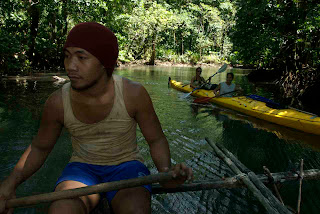
The time has come for serious trials of the Komodo in Solomon Islands country. During the BBC project, now completed, we made very good use of it but had not had the chance to go on some serious touring. But now on real cruising holiday, we are attending to this!!!

In light winds, at a cruising speed of 3 to 4 knots with two paddlers getting fit - again(!)-, we have been able to expand our exploration territory from the KUNA anchorage place, doing touring trips of 5 to 15 miles (9 to 28 km) over the various lagoons of the Russell islands. With the predictable and light tradewinds, the sail has been perfect to add 1 knot to our cruising speed and rest the old arms to cruise past the cliffs and take some photos!
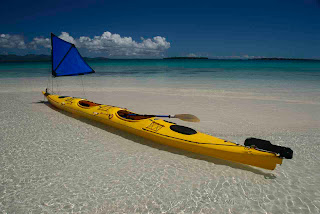
The Russels are an interesting group of islands. Once a volcano, it got eroded and sank under sea level, became covered in coral reefs but later got uplifted again dramatically, creating an amazing undersea geomorphology and some limestone islands. Most of them are old reefs now sticking out of the water. One can still see the old corals. Once submitted to rains and winds, the coral erodes into some very sharp stones, making it virtually impossible to walk on it. Thankfully a few sandy beaches are there inside the shallow reef lagoons.
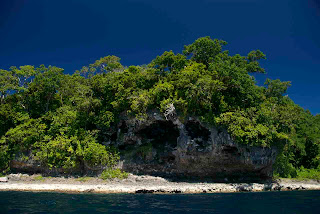
Kayak trips are great to get where the “KUNA” cannot get to due to her – yet small- draft (1.5m). On the Komodo, it becomes easy to cross over reef edges and lagoons and go from island to island in a straight line, visiting the few sand beaches and checking snorkelling spots.
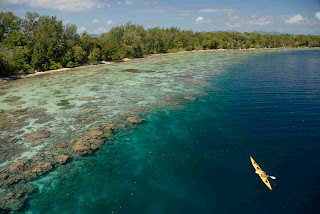
One some narrow islands, we could even portage the kayak from one side to the other to shorten our path!! We have been particularly impressed by the very shallow draft of the Komodo, allowing us to travel in no more than 15cm of water without touching the bottom!! Great for coral reefs…
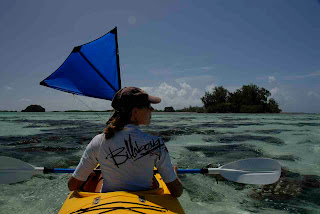
A shallow lagoon is easily crossed: great to see all th epurple branching corals
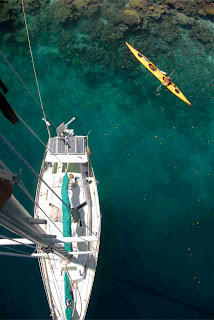
While snorkelling, it is easy to take the kayak along on a long towing rope, whilst skin diving and if the winds aren’t to strong, the Komodo follows, like a very disciplined pet, while swimming the reef edges.
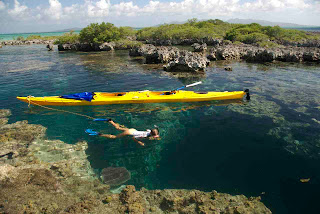
Due to its great stability as a double kayak, it has been a great platform to get in and out of whilst in the water, so no need to find a beach to park while going swimming! There are indeed very few sand beaches in the Russells, and the limestone shores are too high and too sharp to land the Komodo on. It has indeed been a relief to travel in a plastic kayak: no inflatable dinghy or glass craft would survive this lethal country. Only minor scratches can happen to plastic and we have been able to just tie the komodo to some rock emerging from the reef whilst going for a swim.
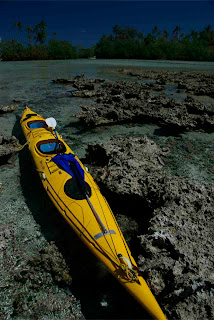
The Komodo has also been a great stable platform to scuba dive out of, though carrying to sets of dive gear is only possible over a short distance

And of course we have been dragging our lures around these – not so fishy – waters and sometimes got lucky to catch a feed!
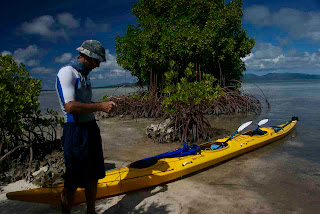
Detangling the trolling lines

finally a catch!
Check the KUNA blog (www.kunayacht.blogspot.com) for more detail on the locations. The Russell islands are a perfect area for a kayaking holiday, even without a yacht!
PS:
Bolts…
While sailing the KUNA in flat waters, in between the islands, we have been towing the Komodo and to get around the problem of its bolts getting undone with the wave action (also the chop when the komodo is parked next to the KUNA at anchor), we added spring washers, which seem to help preventing losing the bolts.




